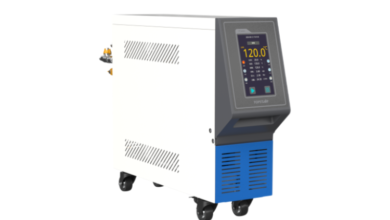How to manage extreme battery temperatures in an 18 kWh solar system?

One of the most overlooked yet crucial factors when managing an 18 kWh solar system is battery temperature. Studies have shown that extreme heat can degrade battery performance by up to 20%, and freezing conditions can reduce usable capacity by nearly 30%. For homeowners who rely on off-grid home solar systems, these losses can jeopardize both their daily energy independence and their long-term investment. As an experienced manufacturer of off-grid solar systems, we understand that improper battery temperature management is often a leading cause of system failure.
Battery Performance and Temperature in an 18 kWh Solar System
The performance of an 18 kWh solar system battery pack is highly sensitive to ambient temperature. In off-grid home solar systems, lithium-ion batteries perform best between 15°C and 30°C, while lead-acid battery systems are more susceptible to temperature fluctuations. Prolonged exposure to high temperatures accelerates chemical reactions within the battery, shortening its lifespan. Conversely, extreme cold slows ion movement and reduces charging efficiency. Off-grid solar system manufacturers consistently emphasize temperature thresholds during system design, as an uncontrolled battery environment is often a leading cause of premature system failure. Understanding these dynamics is the first step to protecting your solar investment.
See also: Interior Basement Waterproofing Techniques for Long-Lasting Protection
Designing an 18 kWh Solar System for an Optimal Battery Climate
Proper system design is crucial for ensuring the optimal battery life of an 18 kWh solar system. For homeowners using off grid home solar system, integrating an insulated battery enclosure, a temperature-controlled space, or an underground battery storage room can significantly stabilize the power supply environment. Furthermore, many off-grid solar system manufacturers build specialized battery enclosures and include ventilation fans in hot regions or heating mats in cold climates. Designing according to local climate conditions can minimize stress on the battery bank and create an efficient energy ecosystem that provides stable power output.
Active Cooling and Heating Strategies
In regions with drastic seasonal changes, active climate management is crucial for 18 kWh solar systems. Passive insulation alone cannot ensure safe operating conditions. Advanced off grid home solar systems often integrate thermostatically controlled cooling fans, liquid cooling loops, and even small air conditioners in hot climates. Conversely, in cold weather, heating blankets or resistance heaters can be added for extra warmth. As a leading manufacturer of off-grid solar systems, we recommend using monitoring solutions that automatically trigger these systems when specific thresholds are met. While proactive measures increase the initial investment, they can reduce replacement costs and extend the lifespan of the battery system.
Battery Temperature Monitoring and Intelligent Management
Modern 18 kWh solar systems should be equipped with real-time monitoring tools to prevent unnoticed failures. For off-grid home solar systems, a smart battery management system (BMS) can track voltage, current, and temperature data and issue alerts when safe limits are exceeded. This predictive approach enables homeowners to intervene early and avoid irreversible damage. Furthermore, many off-grid solar system manufacturers now offer cloud-based platforms that allow users to remotely track battery health. This not only improves reliability but also supports better maintenance planning and system upgrade decisions.
Battery Lifetime Maintenance Practices
Routine maintenance is crucial for maintaining reliable energy storage in an 18 kWh solar system. Owners of off-grid home solar systems should regularly clean the battery terminals, inspect the casing for dust or moisture, and verify that the cooling and heating mechanisms are functioning properly. For lead-acid batteries, you must monitor electrolyte levels, while lithium-ion batteries require you to perform regular firmware updates via the BMS. Off-grid solar system manufacturers recommend that customers schedule professional inspections at least once a year. Preventive maintenance reduces the risk of battery failure, which is often the leading cause of solar system failure.
Protect from temperature-related failures
Extreme temperatures are one of the biggest threats to 18kWh solar systems, especially for homeowners relying on off grid home solar systems. Batteries are almost always the first point of failure, making proactive management crucial. By designing for the climate, utilizing active temperature regulation, employing smart monitoring, and adhering to a strict maintenance schedule, homeowners can prolong the lifespan of their system and achieve genuine energy independence.gent monitoring, and considering environmental impacts. All of these factors contribute to a more reliable and cost-effective system over the long term.





